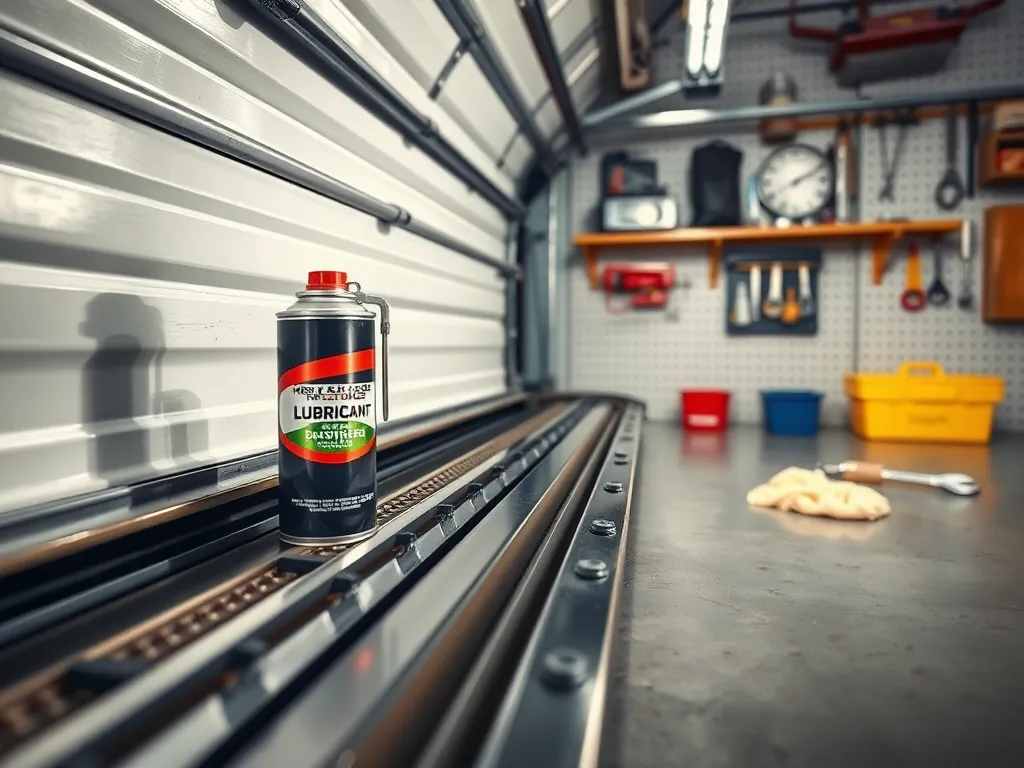Essential DIY Tips for Properly Lubricating Garage Door Tracks

The Ultimate Guide to Garage Door Maintenance
Garage door maintenance is a crucial aspect of home upkeep that often gets overlooked. Regular maintenance can enhance the longevity of your garage door, ensuring it operates smoothly and safely. A well-maintained garage door can prevent future expensive repairs and can improve the security of your home. Understanding the components of your garage door and how to care for them is vital for optimal performance.
For those looking to enhance their garage door maintenance skills, following a comprehensive DIY guide is invaluable.
Incorporating routine garage door maintenance can help you identify minor issues before they escalate. A simple inspection and cleaning can lead to a more efficient and quieter opening mechanism, which is particularly important for homeowners who use their garage doors frequently. Moreover, taking the time to perform essential maintenance tasks will allow you to understand the operation better and familiarize yourself with potential problems.
Essential components of garage door maintenance include lubrication, inspection, and repair of moving parts. Proper lubrication ensures smooth operation and reduces wear and tear on the system. Additionally, inspecting the door and its mechanisms regularly helps you catch any signs of wear early, such as frayed cables or rusted springs, preventing major issues in the future.
An effective garage door maintenance routine should also involve addressing any track issues and ensuring that all components are properly aligned and adjusted. Tracks should be free of debris and damage, while rollers should move freely along the track. This not only enhances efficiency but also helps avoid accidents due to malfunctioning doors. Scheduling annual professional inspections can be beneficial, providing reassurance that your garage door operates safely and efficiently.
In summary, Garage Door Maintenance is an essential task that contributes to home safety, security, and longevity of the garage door system. By dedicating time to regular maintenance, homeowners can save money in repairs, enhance their door's performance, and ensure the safety of their family and possessions.
Types of Lubricants for Garage Doors
When maintaining your garage door, choosing the right lubricant is key. Silicone spray lubricants are most recommended for garage door tracks due to their ability to repel moisture and prevent rust. They provide a long-lasting barrier while ensuring that tracks remain clean and free from debris that could impede operation.
To maintain optimal garage door functionality, regularly perform the essential track cleaning process to prevent jams.
Grease options, like lithium grease, are ideal for moving parts such as hinges and rollers. This type of lubricant adheres well, which is beneficial in high-friction areas that experience constant motion. It's important to avoid using heavy grease on tracks, as this can attract dust and debris, leading to blockages.
Ensuring a smooth operation of your garage door hinges requires proper lubricant application for longevity and performance.
Oil-based lubricants, while effective, can create a slippery mess. On the other hand, silicone lubricants are less messy and do not degrade over time, making them a better long-term solution for maintaining various components of a garage door system. It's essential to choose the correct type of lubricant based on the part of the door you are working on to avoid unnecessary complications.
For those concerned about environmental impact, eco-friendly lubricant choices are available. These options often use biodegradable ingredients that are less harmful to the environment while still providing effective lubrication and protection for your garage door components.
Common brands for garage door lubrication include WD-40, Garage Door Lubricant by DuPont, and CRC Heavy Duty Silicone. Each brand offers unique properties and solutions suited for different parts of garage doors, making it essential to choose the right one for your needs.
Step-by-Step Guide to Lubrication
Preparing your garage door for lubrication involves first ensuring the door is closed and disconnected from the opener. Clear any debris or obstacles around the door and inspect the tracks for any damage. This is also an excellent time to check other components like the springs and cables for signs of wear or damage as you get ready to lubricate.
Tools needed for the lubrication process typically include lubricant spray, a clean cloth, a ladder (if necessary), and possibly a brush to clean debris from tracks. Having these supplies ready will make the process quicker and more efficient, ensuring you don't miss any steps.
To apply lubricant effectively, spray evenly onto all moving parts of the garage door, including hinges, rollers, and tracks. Avoid over-saturating the parts; a light coating is usually sufficient. Make sure to wipe away any excess lubricant that may attract dirt and debris.
For best results, lubrication should be done at least twice a year, though for areas with high humidity or heavy use, more frequent lubrication might be necessary. A maintenance schedule can provide reminders for when to perform this essential upkeep task.
During lubrication, safety precautions should be taken seriously. Ensure you are using appropriate gear such as gloves and eye protection since lubricants can be harmful if they come into contact with skin or eyes. Always follow the manufacturer's instructions for the specific lubricants being used, and be cautious when working around moving parts.
Common Issues Caused by Lack of Lubrication
Noisy garage door operation is one of the first signs indicating that your garage door needs maintenance. Excessive noise during operation often means that lubrication is required. Addressing this issue early can prevent further damage to the door components.
Worn-out tracks and rollers are another common consequence of lack of lubrication. Without consistent lubrication, friction will increase and lead to wear over time, necessitating more extensive and costly repairs or replacements. Regular lubrication can extend the lifespan of these components significantly.
Increased wear on the motor can occur when doors do not operate smoothly due to a lack of lubrication, leading to motor failure. Motors require minimal resistance to operate efficiently, and without lubrication, they may have to work harder, causing premature burnout.
Potential safety hazards can arise if the garage door components are not regularly maintained. Issues like springs that have not been lubricated can snap, potentially causing injury or damage to property. Therefore, it is vital to stay on top of maintenance to avoid such situations.
Signs that your garage door needs lubrication include unusual noises during operation, difficulty in opening or closing, and visible rust on components. If any of these signs are present, it’s time to perform maintenance to ensure safe and efficient operation.
Maintenance Tips for Garage Door Tracks
Cleaning garage door tracks properly is essential for seamless operation. Regularly remove any dirt, debris, or obstructions that may hinder the movement of your door. Using a damp cloth or a mild cleanser can help remove stubborn grime without damaging the tracks.
Inspecting tracks for damage is a crucial part of maintenance. Look for bends, kinks, or any signs of warping that may prevent the door from aligning correctly. If you detect any serious damage, seek professional assistance for track repair or replacement.
Checking rollers and hinges about once a month will help keep everything in working order. Ensure that they are not worn out, as this could compromise the door's ability to function efficiently and safely.
Replace worn-out parts immediately. Components like rollers and springs should not be pushed beyond their limits; replacing them promptly will ensure that your garage door continues to function effectively.
Seasonal maintenance reminders can serve as perfect opportunities to inspect and maintain your garage door. For example, before winter, check for proper seals and lubrication, which can help prevent freezing and other weather-related issues.
DIY Garage Door Track Repair
Assessing damage to the garage door track should be your first step in DIY track repair. If you notice any significant bends or misalignments, it will need immediate attention. It's important to determine whether the damage is minor and easily fixable or if it requires a professional assessment.
Basic repairs to DIY can include realigning tracks, tightening screws and nuts, and replacing minor components like rollers. For these tasks, following a step-by-step guide can help ensure you don't miss any critical steps in the repair process.
When to call a professional is when you notice severe damage or structural issues with the track that you feel exceed your capabilities. Hiring a licensed technician can provide peace of mind, knowing that repairs will be conducted safely and correctly.
Tools needed for track repair typically include a level, wrench set, screwdriver set, and replacement parts as needed. Having the right tools handy will make repairs simpler and more effective.
Preventative measures for future issues can involve regular inspections, proper lubrication schedules, and periodic cleaning of tracks and components. Adopting proactive measures can significantly reduce the likelihood of severe track issues arising in the future.
